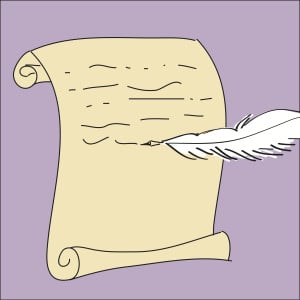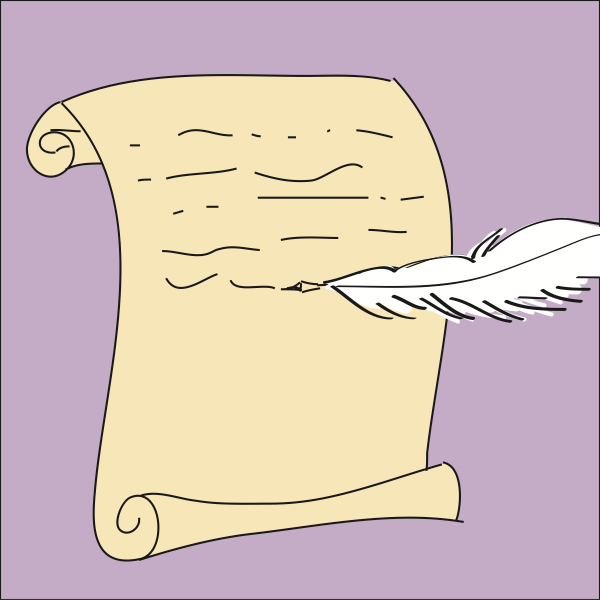With a bustling startup culture and a location at the heart of Silicon Valley, Stanford’s reputation as a “techie” school is incomparable. The University’s offerings at the other end of the academic spectrum — in creative writing — may, however, be the object of equal acclaim, and even more heritage.
This year marks the 67th anniversary of Stanford’s Creative Writing Program and the Wallace Stegner Fellowship, the second-oldest fellowship of its kind in the country. The Stegner Fellowship, founded by renowned novelist and former Stanford professor Wallace Stegner in 1946, provides financial and artistic support for up-and-coming writers.

According to Scott Hutchins, a lecturer in the program, the fellowship was created by Stegner as a way of providing a creative outlet to soldiers returning from World War II.
“Stegner saw the GIs coming back after World War II and felt like there needed to be a writing fellowship for them to be a part of,” Hutchins said. “They were a little bit older than most college students and had stories to tell.”
Tom Kealey, another lecturer in the department, said that the fellowship offers a unique opportunity for young writers to develop their craft in an encouraging but rigorous setting.
“[Stegner] designed the program for people in their 20s and 30s to come to Stanford for a year or two to work on their own writings,” Kealey said.
The 10 Stegner fellows — five fiction writers and five poets — are chosen from about 2,000 applicants and come to Stanford to work on their writing for two years.
“They’re really just beginning their careers,” Kealey added. “They get to be here and take workshops with amazing writers and with each other. They really get to concentrate on their own writing.”
Some fellowship graduates stay close to the Farm. Kealey, Hutchins and Tobias Wolff M.A. ’78, another professor in the program, were all once Stegner fellows.
Hutchins said that his time as a Stegner fellow compelled him to stay at the University as an instructor despite his busy schedule as a professional writer.
“I came as a Stegner fellow, which was a great blessing and a wonderful surprise, and I stayed for a lot of reasons,” Hutchins said. “This is a really supportive environment. You get to work with writers you admire, the teaching is taken incredibly seriously and the program is supportive of us as teachers and artists.”
Rather than being a graduate program in creative writing, Wolff characterized the fellowship as an association for creative minds and a program that — despite various leadership changes over the years — has retained much of its original form.
“It began not as a degree-granting graduate program but as a fellowship of writers, writers like Ken Kesey [’59], Tillie Olsen, Larry McMurtry, Evan Connell [’48]…fellows who have gone on to distinguish themselves in different ways,” he said.
John L’Heureux took the reins of the Stegner Fellowship in 1973 as the first director of the Creative Writing Program, a move widely considered among faculty as marking the program’s retrenchment as a highly selective society of stipend-funded fellows
“We have five Stegner fellows each year in fiction and five in poetry, chosen from about 2,000 applicants,” Wolff noted. “It’s probably the most selective program in the country.”
In addition to the Stegner Fellowship, Wolff cited the Creative Writing Program at large for distinguishing Stanford as one of creative writing’s academic powerhouses.
“Our undergraduate program is the best in country — there’s nothing to compare it to,” Wolff said.
A broad appeal
Wolff cited the program’s flexibility in terms of scheduling as another defining feature. Individuals can either pursue an emphasis in creative writing through the English major or a stand-alone creative writing minor, allowing a greater pool of students to take classes in the subject.
“It’s woven into the English major as an emphasis — there’s no creative writing major,” he said. “A bio major, for example, could do a minor in creative writing as well.”
Wolff cited the popularity of creative writing class as a result.
“The classes are full — there always seems to be demand for more,” Wolff said. “We have an astonishing array of classes offered under creative writing.”
According to Kealey, the undergraduate program expanded to its current size about 10 years ago when Eavan Boland, its director since 2002, took the helm.
“[Before Boland], there were only eight classes a quarter,” Kealey said. “Now we have as many as 30 classes a quarter. It’s one of the most popular minors on campus.”
Boland said that, in addition to expanding the program to accommodate the diverse interests of students, she strongly believes in putting young working writers into classrooms as teachers. Facilitating programs include the Jones Lectureship, which draws heavily on the ranks of Stegner fellows.
“A young writer reminds our students that writing is a living tradition,” she said. “The Stegner fellows stay and become creative writing teachers. They’re developing their first or second book, talking about their work and others’ work all day, and they bring that energy into the classroom. It’s what makes the vibe of the program.”
Students can choose to focus on fiction, creative non-fiction or poetry within the emphasis or minor. According to Kealey, fiction is the most popular track.
The program offers a wide array of classes, including The Graphic Novel, Fiction into Film and Imaginary Realms, which will be co-taught by Kealey.
Kealey cited the program’s ability to offer a variety of new classes each year, depending on student and teacher interest in specific subjects, as a strength. One such class was modeled on the National Novel Writing Month, a nation-wide event that challenges individuals to write an entire novel in the course of the month of November.
“In the fall, I taught the Novel Writing Intensive [with Hutchins], which is based on NaNoWriMo [National Novel Writing Month],” Kealey said. “We were reading novels as literature and as a craft. For the month of November, students are writing a 50,000-word novel. We had 16 students, and they all completed it.”
For students, the program’s popularity can be attributed not only to its innovative take on structuring courses, but also to the workshop model of writing that provides a unique and supportive environment for sharing and critiquing one’s work.
Susan Haynes ’14, an English major with a creative writing emphasis in prose, emphasized the benefits of workshopping from her own experience.
“The workshopping format is fantastic,” Haynes said. “When a class begins, you have time to work on a short story or script or whatever, then halfway through the course, you turn it in, and the next half of the course, through the end of the quarter, you are workshopping, which entails all of your peers reading your work, offering suggestions. So you get 15 to 17 different perspectives, which helps to highlight what’s working and what’s not.”
Haynes knew she wanted to be an English major before coming to Stanford, choosing the University because of its Creative Writing Program.
However, other students come to campus with little idea that they’ll try their hand at the discipline, despite the program’s acclaim.
Jenny Thai ’13 said that she did not think she would be an English major when she came to Stanford four years ago. After taking her first creative writing class, however, she realized how much she enjoyed the discipline.
“I’ve never had a creative writing class I didn’t like,” Thai said. “The great thing about the classes is that each lecturer has a different style of running the class, so each class is a little different, which is what makes it so interesting.”
Thai cited the individualized nature of the program as a major draw.
“The classes are rewarding because you work on things that matter to you personally,” she said. “It’s nice to write for an audience, but one of the luxuries of the writing program at Stanford is getting to work on what matters to you. It’s a self-indulgent activity, but rewarding.”
Delving deeper
For students who want to take their writing to the next level, the program offers Levinthal Tutorials, during which undergraduates work with a fellow on a short story, collection of poetry or other piece of writing over the course of the quarter instead of taking a workshop-style class.
“It’s truly a once-in-a-lifetime opportunity,” Kealey said. “For the fellows, they get the enthusiasm and energy from working with the students. It’s not something you would see at any other program.”
Wolff echoed Kealey’s sentiment regarding the tutorials.
“Writing is a very solitary business,” Wolff said. “[This program] provides a complementary dimension in which solitary people can find a common group to work with.”
Even as the Creative Writing Program continues to garner broad acclaim, Boland framed the program’s distinguishing aspect as the interaction between participants and the writing that ensues.
“It’s the level of conversation,” she said. “What we’re most proud of is the level of excitement from the undergraduates about the writing they love, the stories they read and the poems they remember.”
Correction: A previous version of this article stated that the Creative Writing Program celebrated its 50th anniversary this year. In fact, the program was founded in 1946. The Daily regrets the error.
